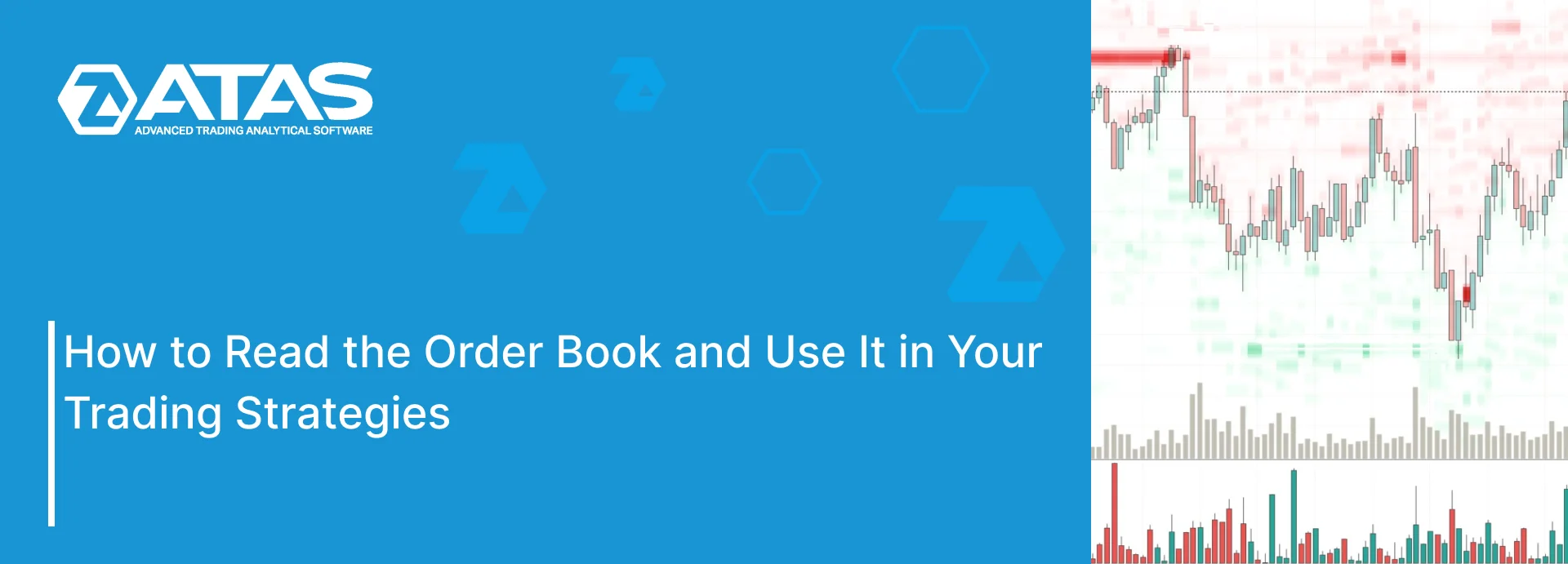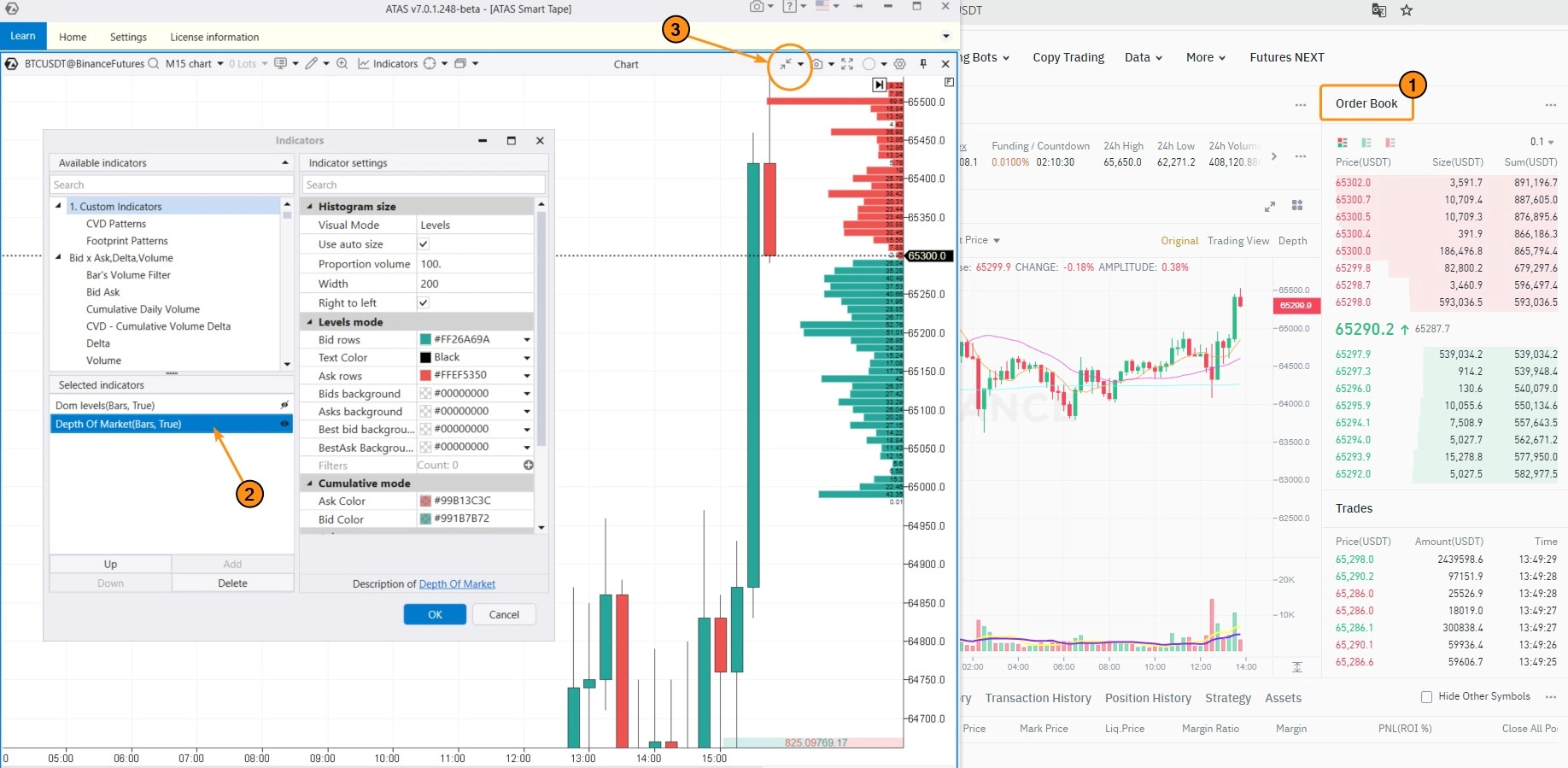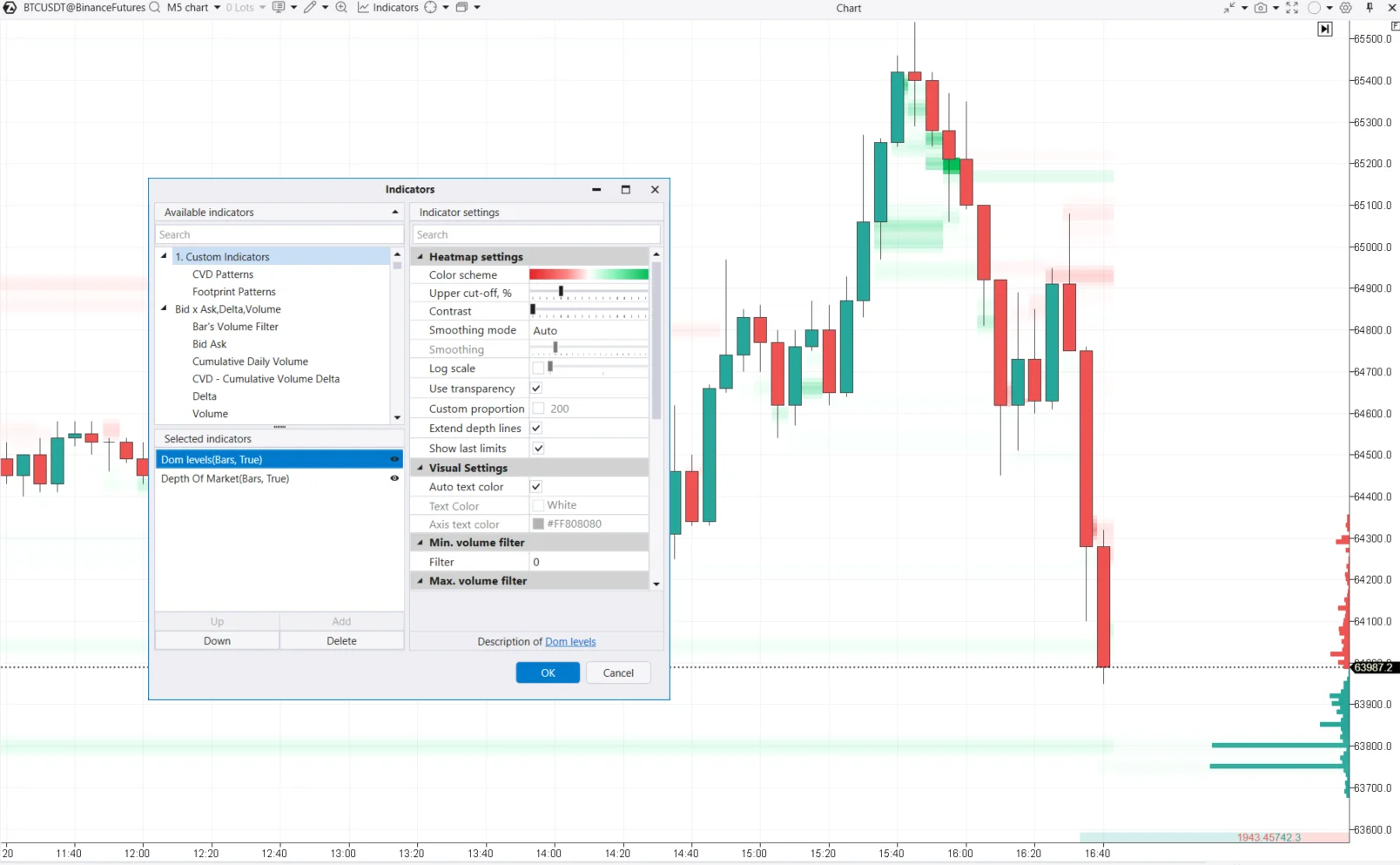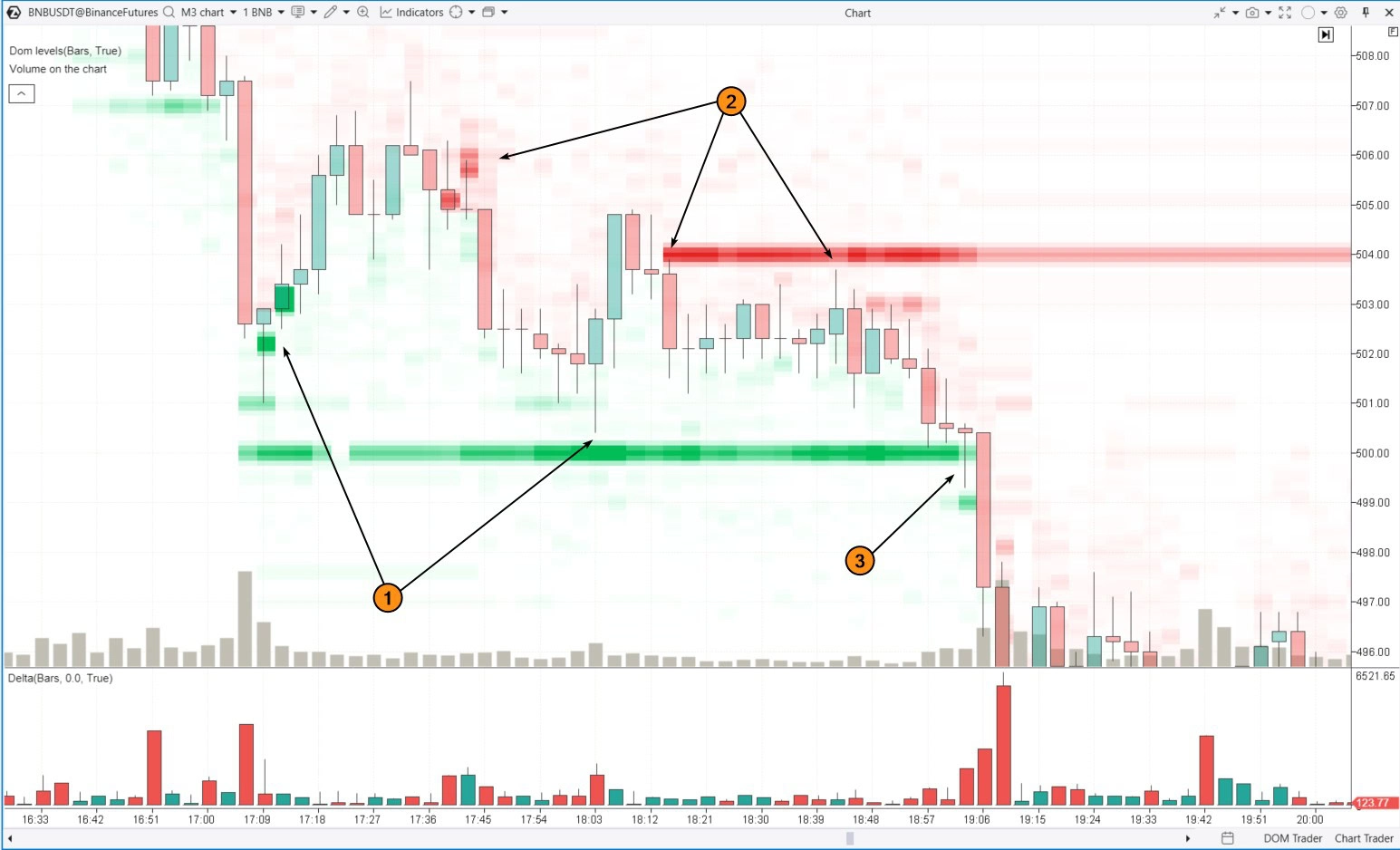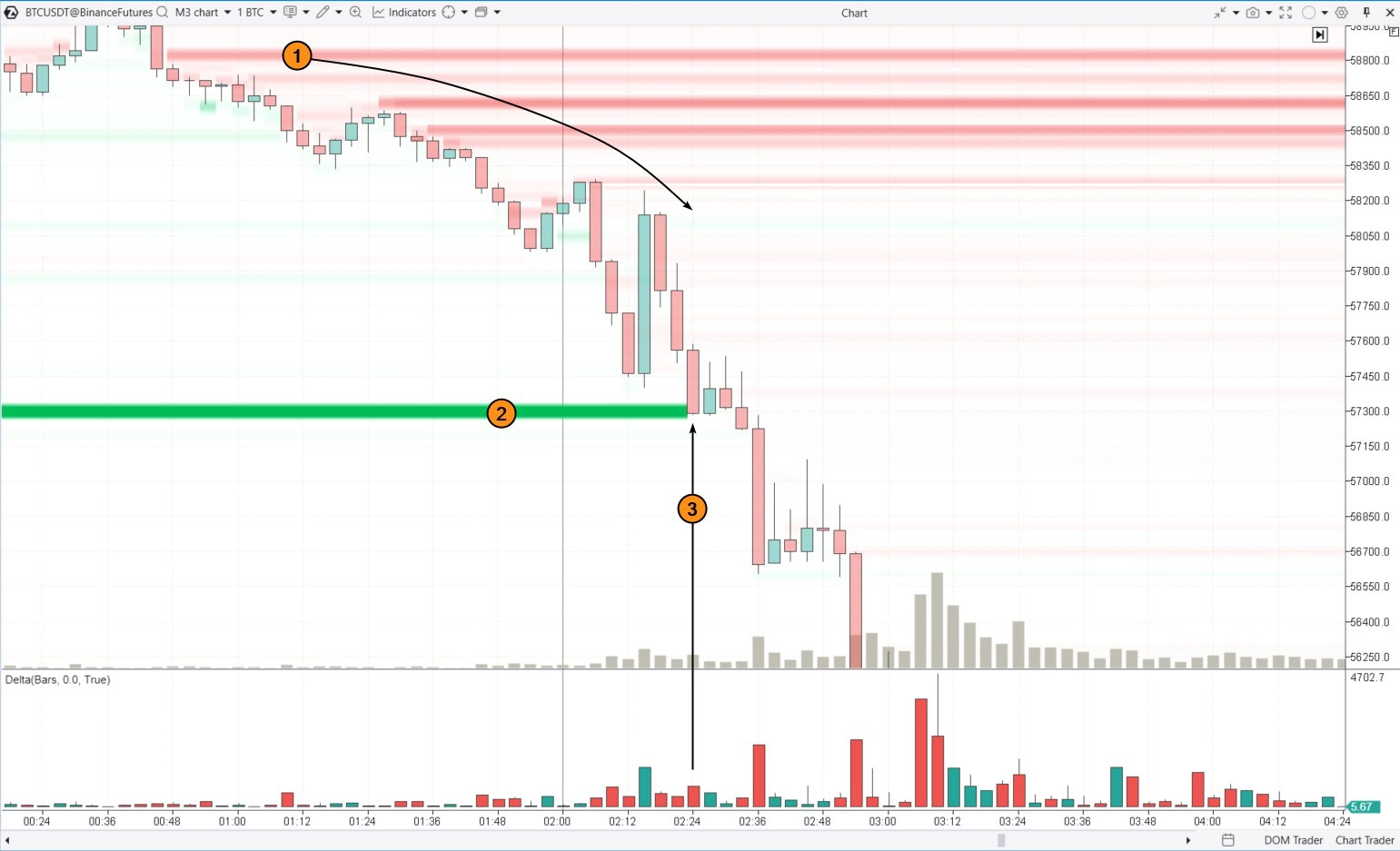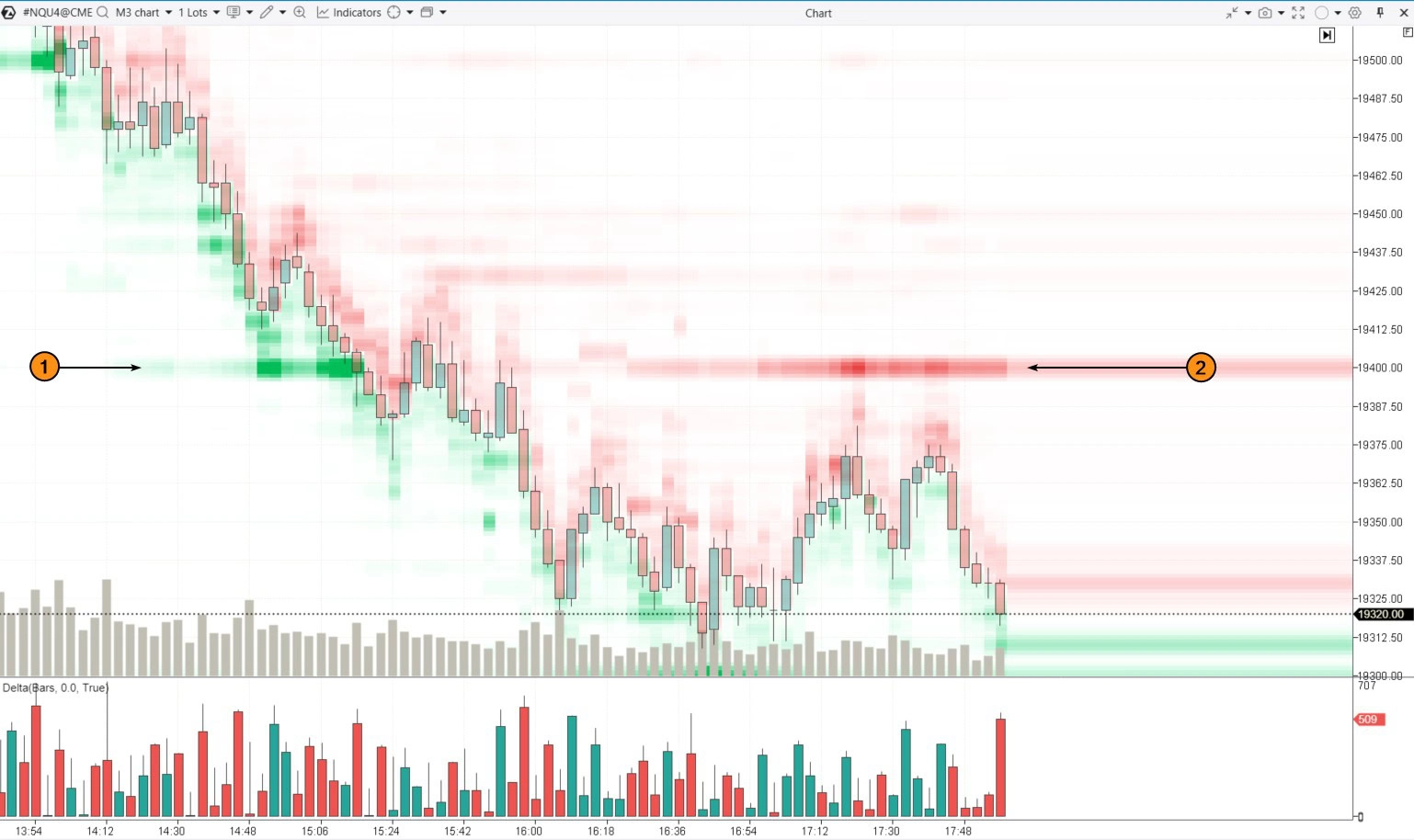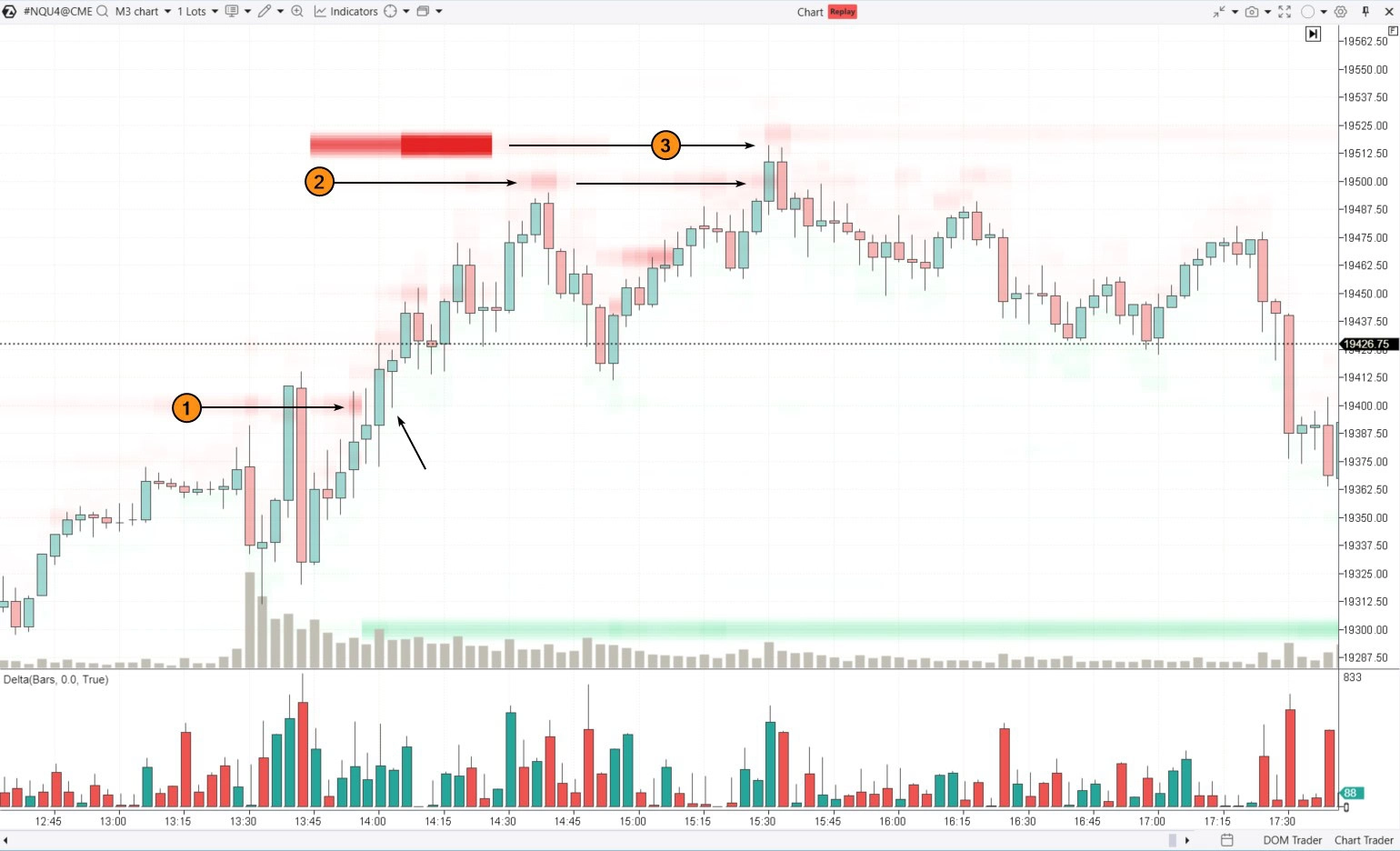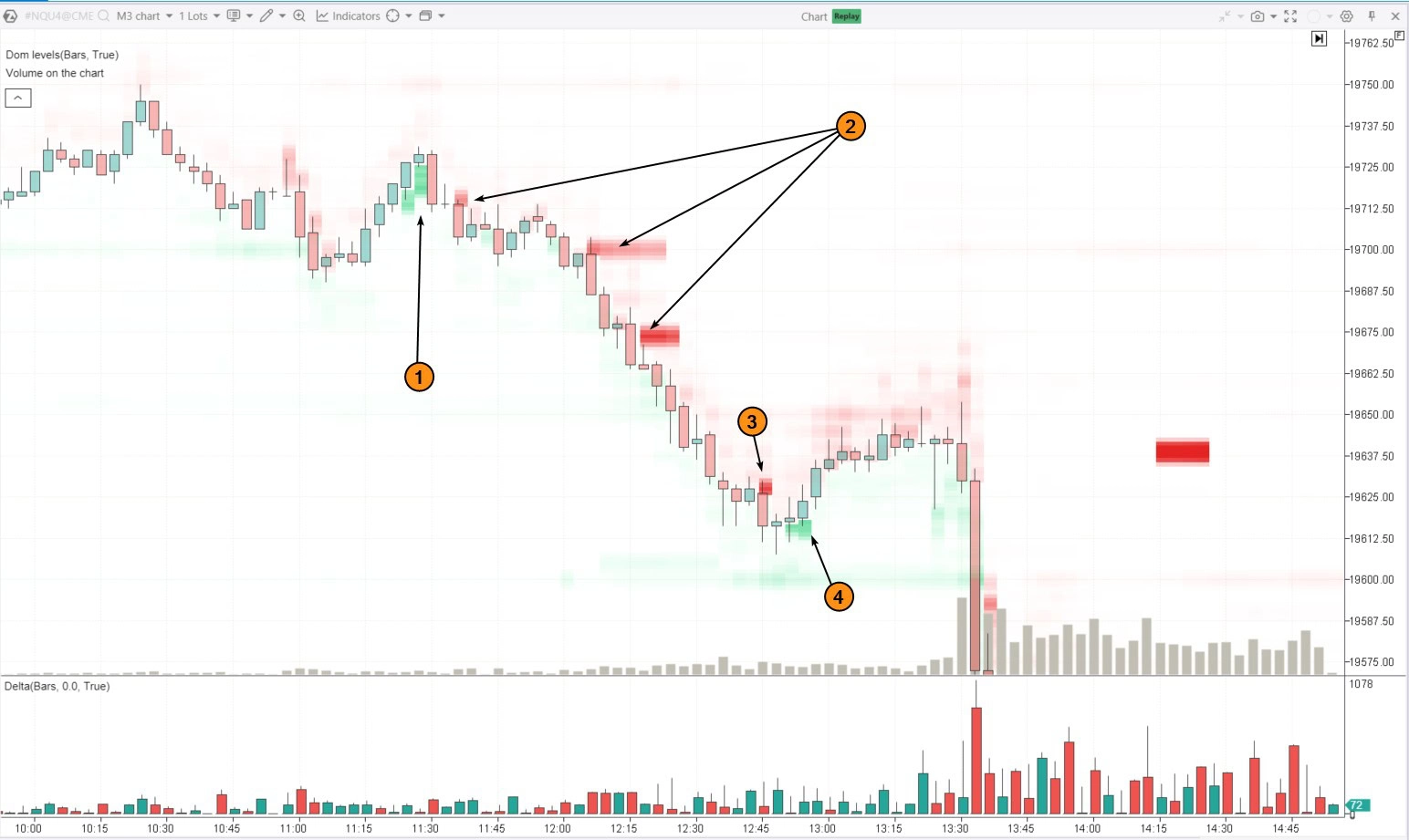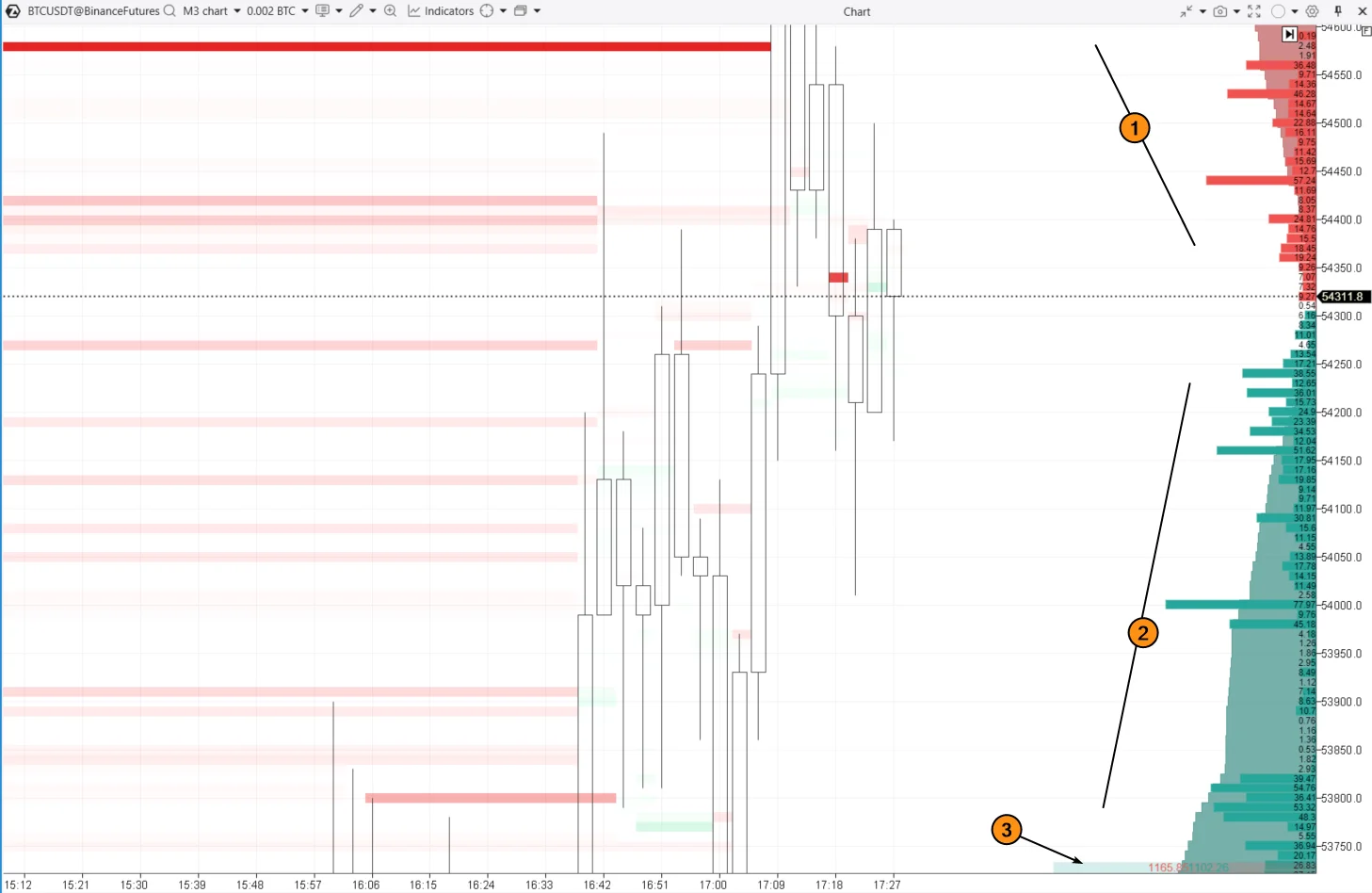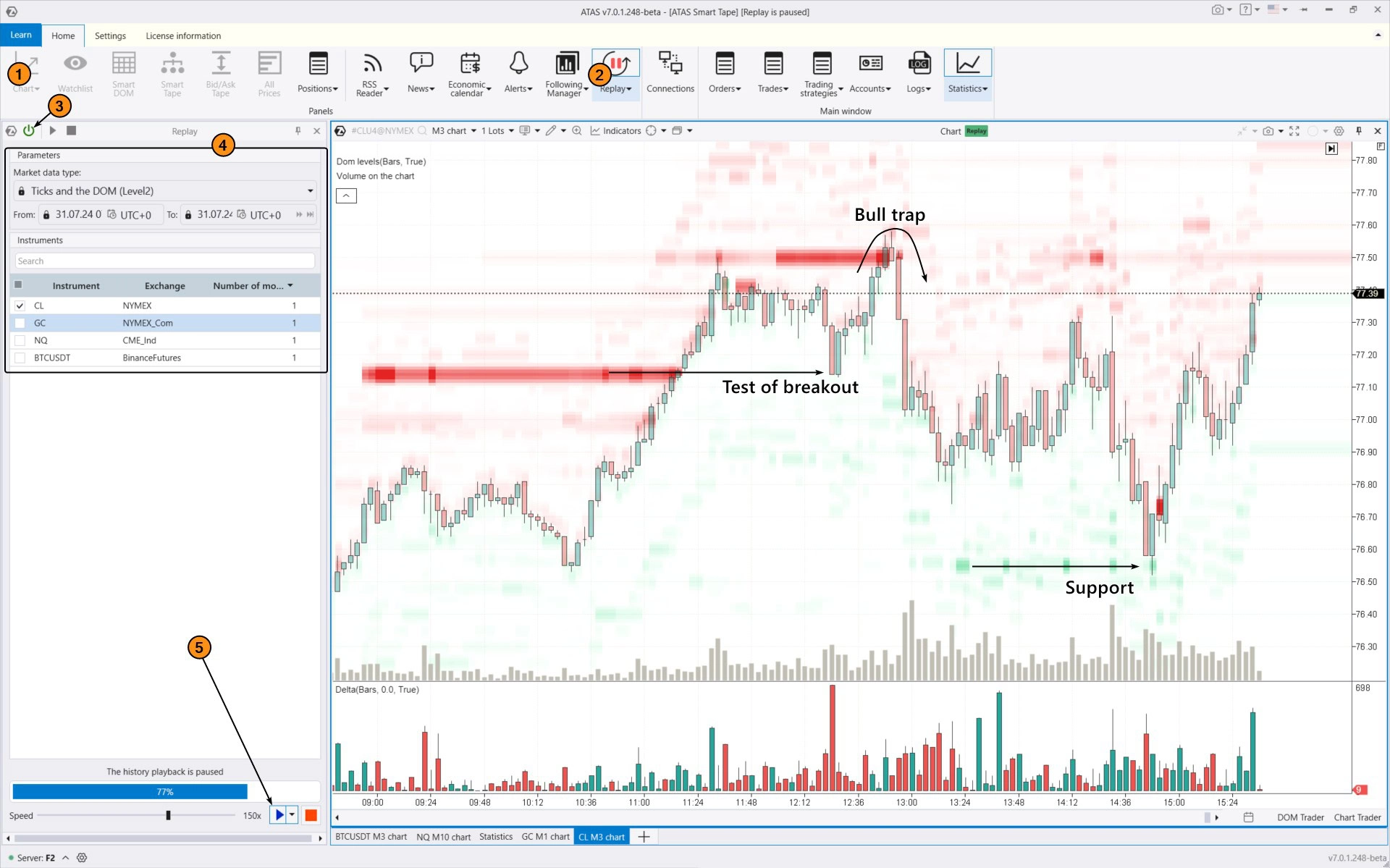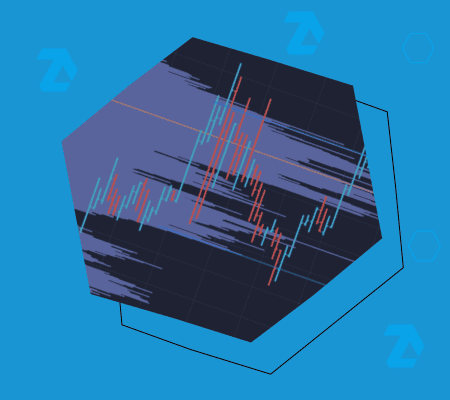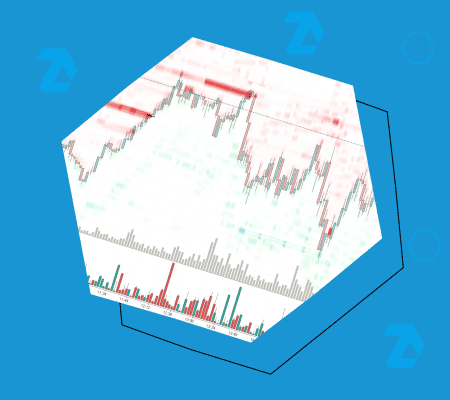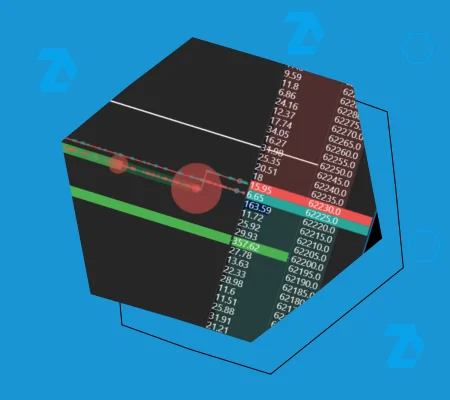Number (1) on the chart illustrates this scenario. Limit buy orders just below the current price encouraged traders to go long. However, this might have been a trap set by smart money to find liquidity from buyers and establish short positions.
Soon after, the situation changed: the large buy orders turned red (indicated by arrows 2). These orders put significant pressure on the price, pushing it lower over time until another manipulation occurred.
Number (3) shows sell orders in the book, which prompted traders to sell more (increasing panic). The price did drop, but smart money might have used this as an opportunity to buy back contracts and close (possibly partially) their short positions.
Number (4) indicates genuine signs that buyers became active. However, this did not last long, and with the start of the main session, the downward movement resumed.
When trading based on market manipulation, a trader should monitor situations where sentiment shifts rapidly within a narrow range, and large buy orders are quickly replaced by sell orders. This is likely a sign of manipulation aimed at trapping market participants.
Learn more about order book manipulations! Read the article: “What Is Spoofing?“
To wrap up the discussion on order book trading strategies, it is important to note that large volumes in the order book often act as support and resistance levels. This gives traders opportunities to use strategies based on price reversals from these levels, breakouts, or false breakouts. However, it is important to keep a few key factors in mind:
- be mindful of potential manipulations within the order book;
- manage your risk by setting protective stop orders to minimize potential losses;
- analyze the context to understand what those large volumes in the order book truly represent.

